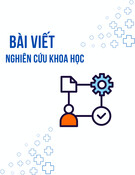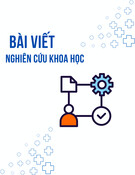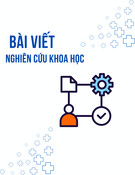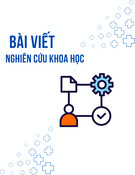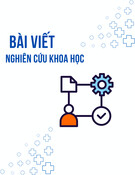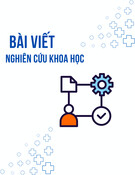CHAPTER 8 CHAPTER 8 QUALITY MANAGEMENT
SU DINH THANH
LEARNING OBJECTIVES
DIFFERENCES IN QUALITY MANAGEMENT… DIFFERENCES IN QUALITY MANAGEMENT…
t h (cid:131) Quality management has its roots in the private sector. it th i i t t
l di h i t t t
t Q lit Two issues have to be considered: (cid:131) First, most quality management approaches, including Fi lit total quality management (TQM), have originally been developed for the manufacturing industry. d t i d t d f th f l i
DIFFERENCES IN QUALITY… DIFFERENCES IN QUALITY…
i t i t f bli d diff
l t th t k h ld ith di f i
lik t liti i th h
t d d lti ll d f l
(cid:131) Second, differing from private sector, public agencies i S cannot choose their customers – they often have to serve a rather large set of stakeholders with diverging interests. (cid:131) Moreover, even though many politicians like to pay M lip-service to the ideas of the ‘quality gurus’, other loyalties and standards of excellence are also l important to them.
QUALITY MEASURE QUALITY MEASURE
(cid:132) What is quality? lit ? (cid:132) Wh t i (cid:132) Bovaird (1996) has distinguished four key concepts of
l
(cid:132) quality as ‘fitness for purpose’ (or ‘meeting organizational objectives , essentially deriving from a systems perspective); objectives’, essentially deriving from a systems perspective); (cid:132) quality as ‘meeting customer expectations’ (or ‘exceeding consumer
expectations’,
deriving
from
customer psychology); psychology);
(cid:132) quality as ‘passionate emotional involvement’ – quality as that ‘which lies beyond language and number’ (the social psychology approach). h)
h l
quality during its evolution as a concept: quality during its evolution as a concept: (cid:132) quality as ‘conformance to specification’ (a meaning deriving from an engineering perspective and from the ‘contract culture’); ’)
QUALITY MEASURE QUALITY MEASURE
(cid:132) How to measure quality? (cid:132) It is certainly possible to analyze certain aspects of
y p y p
quality, even using quantitative methods. Scholars have made various attempts to find a (cid:132) Scholars have made various attempts to find a several quality measure which can capture dimensions of quality, incorporating the views of dimensions of quality, incorporating the views of different stakeholders.
QUALITY MEASURE QUALITY MEASURE
(cid:132) Relying on a single quality index is always risky
l
f
ll
d it
(cid:132) Second,
t di
i
t
against g
features of
additional
p
it creates a ‘quality score’ which is not at all transparent as the different dimensions of quality are hidden. S it also allows for deficient dimensions to be b d fi i compensated – for example, customer service may be traded off a product. Such compensation is inappropriate if some stakeholders require minimum achievements of specific quality dimensions. (cid:132) A multidimensional concept is more meaningful to define a whole set of measures instead of relying on a sole index.
for management (Bouckaert, 1995). (cid:132) First,
QUALITY MEASURE QUALITY MEASURE
(cid:132) For services, the following quality dimensions influence (cid:132) For services the following quality dimensions influence
l (1990
i h
a customer’s view of quality: g (cid:132) Tangibles (cid:132) Reliability (cid:132) Responsiveness (cid:132) Competence (cid:132) Courtesy (cid:132) Credibility (cid:132) Credibility (cid:132) Security (cid:132) Access (cid:132) Communication (cid:132) Understanding the customer Source: Zeithaml et al. (1990, p. 23) S 23) l
QUALITY MEASURE QUALITY MEASURE
(cid:132) Quality indicators are categorized as quantitative versus (cid:132) Q lit
tit ti i d i di t t
quality qualitative and subjective versus objective: can (cid:132) Subjective always
(cid:132) Objective quality indicators, however, cannot always
be indicators quantified. They are usually based on some type of survey which measures the reactions or expectations of a group of respondents.
g y q
be convincingly quantified. (cid:132) For example, It is likely to be hard to construct an objective quantitative indicator measuring the comfort of waiting rooms in public agencies (Seats, size of area, noise, atmosphere, decorating state…).
QUALITY MEASURE QUALITY MEASURE
(cid:132) Ideally, a sound set of quality indicators should include l d lit (cid:132) Id ll both quantitative and qualitative indicators, and both objective and subjective factors. bj
t f d i di ld i h t
bj ti ti d t
f (cid:132) Some scholars suggested that performance indicators
should be core measurement of quality. (cid:132) They should fulfill certain criteria of SMART
y (cid:132) Specific (cid:132) Measurable (cid:132) Achievable (cid:132) Relevant (cid:132) Time-related
WHO KNOWS ABOUT QUALITY?
Q
MAJOR QUALITY ASSESSMENT INSTRUMENTS USED IN THE PUBLIC SECTOR USED IN THE PUBLIC SECTOR
(cid:132) We can use instruments as follow: (cid:132) We can use instruments as follow:
(cid:132) The ISO 9000 Series, (cid:132) Citizen charters and (cid:132) Citizen charters and (cid:132) Quality excellence models (cid:132) Balanced scorecards model (cid:132) Balanced scorecards model (cid:132) ….
The ISO 9000 Series
(cid:132) The ISO 9000 Series is an internationally recognized (cid:132) Th ISO 9000 S i i d
i t ti ll i
(cid:132) The international standard outlines how quality systems should be set up in organizations where a contract between seller and buyer requires the demonstration of a supplier’s ability to supply to mutually agreed requirements.
standard for quality assurance.
Citizen charters
(cid:132) The essential idea behind citizen charters, as introduced (cid:132) The essential idea behind citizen charters as introduced in the UK in 1991, was to introduce standards in the p public sector. As the government put it, ‘the citizen must be told what service standards are and be able to act where service is unacceptable’.
(cid:132) The other basic principles of the UK citizen charter (cid:132) Th
g p
f th UK iti b i h t i l th i
were: (cid:132) openness, (cid:132) openness (cid:132) information, (cid:132) transparency (cid:132) transparency, (cid:132) non-discrimination, (cid:132) accessibility and (cid:132) accessibility and (cid:132) redress.
Q Quality excellence models: EFQM and the CAF
Q
y
(cid:132) Quality excellence models may be used for self- (cid:132) Q lit lf d l
b ll
( )
d f assessment or as the basis of external assessment. (cid:132) The 1999 version of the European Foundation for (EFQM) Excellence Model Quality Management (previously known as the Business Excellence Model (cid:132) The Common Assessment Framework (CAF) of the European Member States and the EU Commission
Q Quality excellence models: EFQM
Q
y
p
(cid:132) Please see http://www.efqm.org (cid:132) Please see http://www efqm org (cid:132) The EFQM Excellence Model become a widely used self assessment instrument It includes the following self-assessment instrument. It includes the following elements: (cid:132) leadership (cid:132) leadership (cid:132) policy and strategy making (cid:132) people management (cid:132) people management (cid:132) partnerships and resources (cid:132) processes (cid:132) people results (cid:132) customer results (cid:132) ‘impact on society’ results (cid:132) key organizational results
Q Quality excellence models: EFQM
Q
y
Q Quality excellence models: EFQM
Q
y
(cid:132) The first five of these factors are labelled enablers (cid:132) The first five of these factors are labelled ‘enablers’
(cid:132) The last four are performance results.
(cid:132) The Results criteria cover what an organisation achieves (cid:132) The ‘Results’ criteria cover what an organisation achieves
(cid:132) ‘Results’ are caused by ‘Enablers’ and ‘Enablers’ are
(essentially critical success factors) (cid:132) The Enabler criteria cover what an organisation does (cid:132) The ‘Enabler’ criteria cover what an organisation does
improved using feedback from ‘Results’. i ‘R lt ’ f db k f d i
Q Quality excellence models: EFQM
Q
y
(cid:132) The Model, which (cid:132) Th M d l hi h
i there th recognises
h L d
d S i
d h
hi
l
t f f th d i
are many approaches to achieving sustainable excellence in all aspects of performance, is based on the premise that: th t i b (cid:132) Excellent results with respect to Performance, Customers, People and Society are achieved through Leadership P hi driving Policy and Strategy, that is delivered through People, Partnerships and Resources, and Processes. People Partnerships and Reso rces and Processes
Q Quality excellence models: the CAF
y
A k (CAF)
(cid:132) The Common Assessment Framework (CAF), which hi h t F (cid:132) Th C was designed specifically for public administration, is t self-assessment become b starting t ti instrument for public agencies
(cid:132) Please see http://www.eipa.nl/CAF/CAFmenu.htm
common to t lf a
Balanced Scorecards model
FROM HIGH-QUALITY PUBLIC SERVICES TOWARDS HIGH-QUALITY PUBLIC GOVERNANCE HIGH QUALITY PUBLIC GOVERNANCE
l i id iti i i th t
i hi h th
(cid:132) There is empirical evidence that citizens who are h (cid:132) Th the public reasonably satisfied with the quality of services which they receive are, at the same time, th ti t i cynical about and mistrustful of government, Parliament and the civil service (see CCMD, 1998). This indicates that there is no linear relationship between service quality and trust. t
CCMD 1998) Thi d th i di i il ( t i
d t lit
TOWARDS HIGH-QUALITY PUBLIC GOVERNANCE
t t i di h ld f l i
(cid:132) Quality indicators should not only focus on measuring (cid:132) Q lit service quality as provided by an individual organization b t but also on the quality of services provided by the th f overall service system, and the overall quality of life in a specific jurisdiction.
id d b lit th i l
(cid:132) A high-quality public administration must not only be able to increase customer satisfaction with public services but also build trust in public administration through transparent processes and accountability and through democratic dialogue.
i di ti ifi j
TOWARDS HIGH-QUALITY PUBLIC GOVERNANCE
(cid:132) Public agencies must be enriched by a political concept t (cid:132) P bli of quality which perceives public agencies as catalysts through of a responsible and active civic society, activation of citizens and other stakeholders.
(cid:132) This is likely to be the focus of the development of in the new era of public in the new era of public
i t b i h d b liti l
quality management quality management governance.
TOWARDS HIGH-QUALITY PUBLIC GOVERNANCE
(cid:132) Future quality indicators will need to be developed in ill (cid:132) F t d i order to assess the quality of local governance processes – and many of these will also be relevant at national level to assess the quality of public governance in a country as a whole.
t lit i di d t b d l













